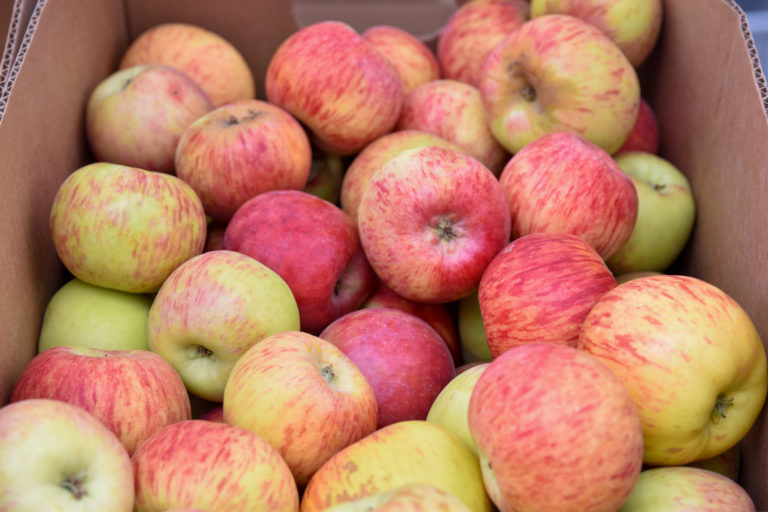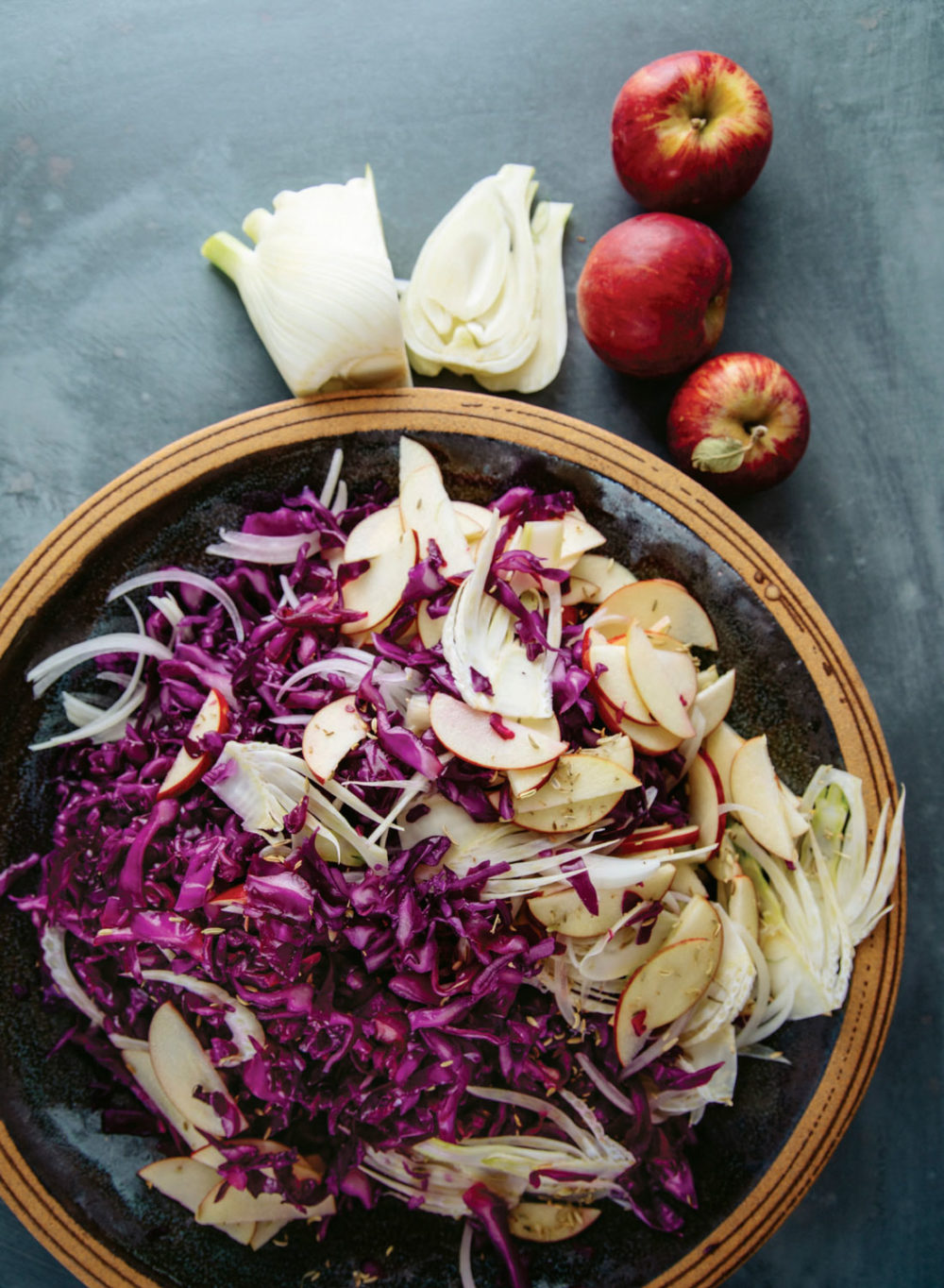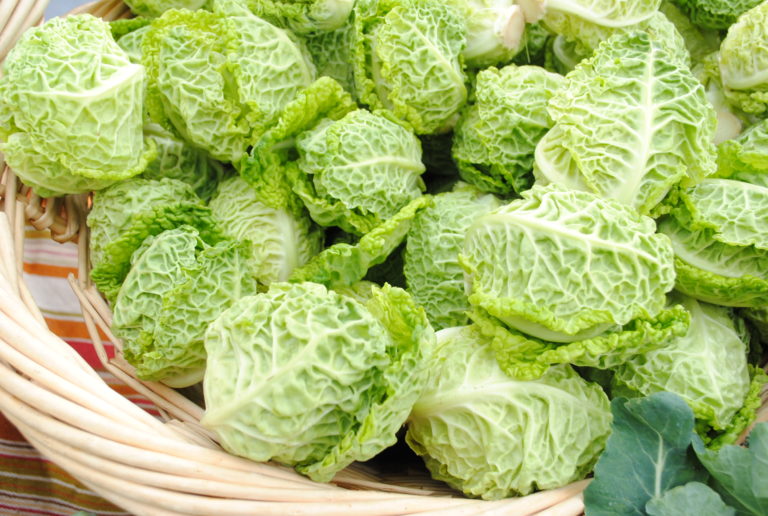
Apple-Fennel Kraut with Red Cabbage
Source: Kathryn Lukas, Farmhouse Culture Guide to Fermenting

Recipe Type: Appetizers and Sides | Seasons: Autumn
This is a very nostalgic kraut for me and reminds me of my time in Germany. A version of this recipe was one of the first krauts I ever made. If you like crunch, red cabbage produces a more toothsome kraut than white or green varieties. When you bite into a fennel seed, the sweetness “pops” and is a lovely contrast to the tartness of the apple that develops in fermentation. If you’re open to cooking your kraut, this kraut might be the most delicious choice. If you add a little red wine and some type of fat (like goose or duck fat, or ghee) and cook it for 15 minutes, you’ll have the most wonderful side dish imaginable for a holiday meal. To get those live cultures back into your meal, you can add a little of the fresh kraut just before serving. —Kathryn
Makes ½ gallon
INGREDIENTS
1,550 grams shredded red cabbage (1⁄8-to 1⁄4-inch-thick shreds)
40 grams coarse unrefined sea salt
200 grams thinly sliced firm-fleshed tart apple (we prefer Pippins or Granny Smith)
100 grams thinly sliced fennel bulb
100 grams thinly sliced yellow onion
10 grams fennel seeds
2 whole cabbage leaves
EQUIPMENT
Kitchen scale
1⁄2-gallon or 2-liter wide-mouth glass jar
Canning funnel (optional)
Kraut tamper (optional)
Fermentation lid
PREPARATION
1. Wash and sanitize all your fermentation equipment, including a large bowl, knife, and cutting board, and set aside to air-dry.
2. Put the shredded cabbage in the large bowl and sprinkle the salt over the shredded cabbage. Using your hands, vigorously massage, squeeze, and mix the salt into the cabbage until the cabbage begins to release liquid, about 5 minutes. The cabbage will transform in color and texture, becoming more translucent and pliable as you go. When you can grab a handful of the shredded cabbage and squeeze the liquid out of it easily, it’s ready to go. Add the apple, sliced fennel, onion, and fennel seeds to the bowl with the cabbage and mix to combine.
3. Transfer the mixture to the jar along with the natural brine at the bottom of the bowl (a canning funnel is useful here and helps to minimize spillage). As you add the mixture, tamp it down with your fist or a kraut tamper to submerge the solids under the brine and force out any air pockets. Continue until the jar is almost full, leaving 2 inches of headspace.
4. Take one of the two whole cabbage leaves, give it a quick rinse, and fold it up so it fits into the mouth of the jar. It should cover all the cabbage below and very slightly protrude from the top of the jar. Depending on the size and density of the leaves, you may need to fold and add the second cabbage leaf if the kraut is not submerged under the brine when the lid is sealed.
5. Seal the jar with the fermentation lid. You should feel some resistance from the cabbage leaf, but not so much that tightening the lid is overly difficult. Place the sealed jar on a plate or in a bowl to catch any liquid displaced through the airlock during fermentation.
6. Ferment the kraut in a cool place away from direct sunlight (3 weeks at 64°F is ideal). Taste the kraut after 2 weeks to determine if the flavor and sourness are to your liking. If it’s not sour enough, reseal the jar and let it ferment for another week, then taste again. When the kraut is sour to your liking, replace the fermentation lid with a regular lid, seal, and store in the refrigerator for up to 10 months.
Reprinted with permission from The Farmhouse Culture Guide to Fermenting by Kathryn Lukas and Shane Peterson, copyright © 2019. Published by Ten Speed Press, a division of Penguin Random House, Inc.


